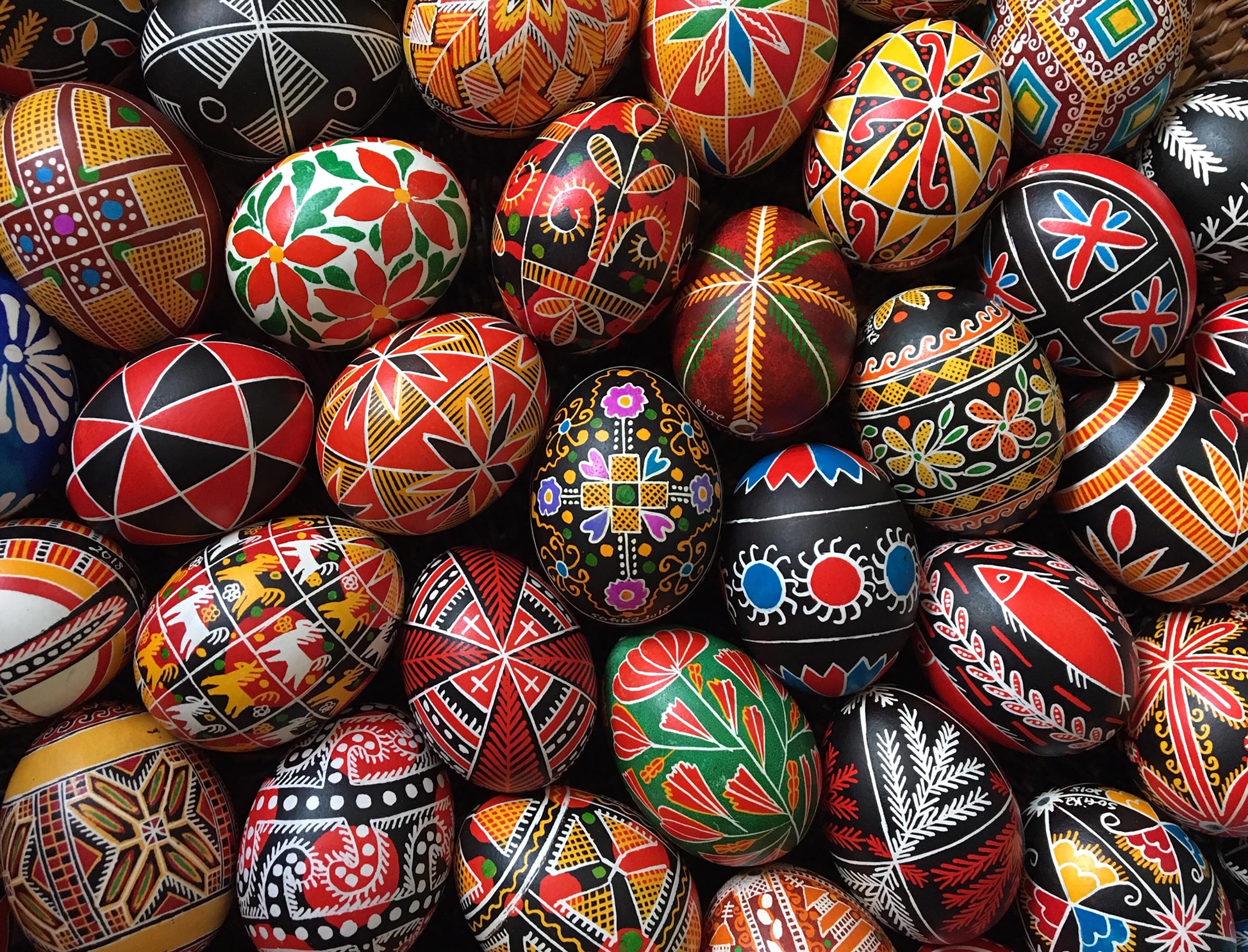
As the war in Ukraine continues once again into the Easter season—with the Catholic and Protestant churches celebrating Easter in 2023 on April 9, and Orthodox Easter, as celebrated by many Ukrainians, falling on April 16—a spotlight is shining on the Ukrainian Easter tradition of decorating Easter eggs known as pysanky. Decorating them has become a gesture of peace, as the war has brought new meaning to an old tradition that dates back to pre-Christian times.
In the first Easter season after Putin’s invasion of Ukraine, artists organized fundraisers and sold these eggs to raise money for humanitarian efforts in Ukraine. In New York City, for example, the Ukrainian Institute of America invited members of the public to contribute decorated eggs and put these submissions on display.
The name for these Easter eggs—pysanka in the singular and pysanky as plural—is derived from the Ukrainian verb pysaty, which means “to write,” or писати in Ukrainian. So in this case, the word refers to the writing on the eggs. While many Christians might be familiar with dying Easter eggs with solid colors, Ukrainian Easter eggs often feature complex geometric and floral designs.
Nobody knows when exactly this tradition started, and a number of different origin stories persist, some dating back to before their association with the Easter holiday. One of these stories says that the ritual is meant to represent the return of sunshine after a long winter, and eggs are used because the yellow yolk is thought to resemble the sun, according to Sofika Zielyk, a New York City-based ethnographer and pysanka artist. Another pre-Christian legend tells the story of a monster, the personification of evil, in the Carpathian mountains; in that story, the more pysanky people make, the tighter the chains are wrapped around the monster, keeping it at bay so that it doesn’t destroy the world.
Zielyk, curated the exhibit of pysanky at the Ukrainian Institute of America, said this story of the monster inspired the show: She envisioned Russian President Vladimir Putin as the monster in this case, and the plethora of accumulated pysanky symbolizes reining him in.
Read more: Here’s why Easter eggs are a thing
In Christianity, eggs are a common symbol of the resurrection of Christ. Traditional designs on the eggs are also imbued with meaning. Per Christian tradition, triangles on eggs represents the Holy Trinity. Different regions of Ukraine decorate eggs in different ways. For example, the pysanky in Western Ukraine boast drawings of chicks to represent fertility and deer to represent strength and prosperity.
The pysanka tradition wasn’t widely practiced in Ukraine when the country was under Soviet rule from World War II until 1991, when Ukraine regained its independence. “Ever since Ukraine regained independence, there has been a rebirth of this tradition in Ukraine,” said Zielyk.
The symbolism of the pysanky continues long after Easter. Some people put egg shells in cattle feed to make the cattle stronger or put them in gardens to enhance the harvest. Putting an egg at each of the four corners of a house is supposed to bring good luck. Thus, Zielyk hoped to ship the pysanky on display at the Ukrainian Institute of America to Ukraine to “symbolically to help with the rebirth” of the country, to contribute to efforts to help the country rebuild.
Now, more than ever, the decorating of pysanky is a considered one of the ways to show that Ukrainian culture exists at a time when the war threatens to destroy sites of Ukrainian culture and heritage. As Zielyk put it, “The fragile egg is still here, and we’re still here.”
More Must-Reads from TIME
- Why Trump’s Message Worked on Latino Men
- What Trump’s Win Could Mean for Housing
- The 100 Must-Read Books of 2024
- Sleep Doctors Share the 1 Tip That’s Changed Their Lives
- Column: Let’s Bring Back Romance
- What It’s Like to Have Long COVID As a Kid
- FX’s Say Nothing Is the Must-Watch Political Thriller of 2024
- Merle Bombardieri Is Helping People Make the Baby Decision
Write to Olivia B. Waxman at olivia.waxman@time.com